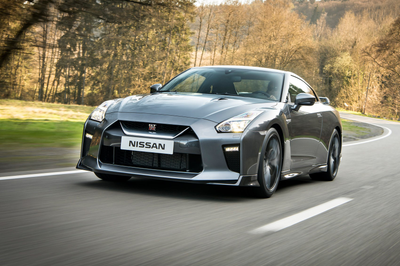Nissan GT-R R35 (Facelift 2016)
Introduction
The Nissan GT-R R35 is an iconic sports car that has been captivating car enthusiasts since its initial release in 2007. However, it was in 2016 that the GT-R received a significant facelift, further enhancing its performance and aesthetics. The facelifted GT-R R35 introduced several updates and improvements, making it an even more formidable competitor in the high-performance sports car segment.
Exterior Design
The 2016 facelift of the GT-R R35 brought some noticeable changes to its exterior design. The front fascia was redesigned, featuring a larger grille for improved airflow and a more aggressive look. The headlights were also revised, incorporating new LED elements that enhanced visibility and gave the car a sharper appearance. Additionally, the rear end of the GT-R received a subtle restyling, with new taillights and an updated bumper, further emphasizing the car's muscular stance.
Interior Upgrades
Inside the cabin, the facelifted GT-R R35 received a range of updates, creating a more refined and luxurious driving experience. The dashboard was redesigned with better ergonomics and higher-quality materials. The driver-oriented cockpit maintained its characteristic simplicity while incorporating modern technology. The infotainment system was upgraded, providing improved connectivity and entertainment options. Furthermore, the seats were revised, offering enhanced comfort and lateral support, ensuring optimum driving dynamics during spirited driving sessions.
Powertrain and Performance
One area where the GT-R R35 facelift truly shines is its powertrain and performance. Under the hood, the twin-turbocharged 3.8-liter V6 engine was further refined to deliver an impressive 565 horsepower. This immense power is sent to all four wheels through a six-speed dual-clutch transmission, resulting in blistering acceleration and precise gear changes. With its advanced all-wheel-drive system and improved aerodynamics, the facelifted GT-R R35 can sprint from 0 to 60 mph in under three seconds, showcasing its track-ready capabilities.
Driving Dynamics
The GT-R R35 facelift also introduced several enhancements to its driving dynamics, further solidifying its reputation as a high-performance sports car. The suspension system received revisions, providing a balance between agility and comfort. The updated electronic stability control system ensures optimal traction and stability, allowing drivers to harness the car's power with confidence. Additionally, the adaptive dampers continuously adjust to road conditions, providing a comfortable ride during daily commuting and excellent handling on the racetrack.
Technology and Safety Features
Nissan equipped the facelifted GT-R R35 with an array of advanced technology and safety features. The infotainment system features a touchscreen, satellite navigation, and smartphone integration. Furthermore, the car is equipped with a rearview camera, parking sensors, and advanced driver-assistance systems, including lane-keeping assist and blind-spot monitoring. These features enhance both the convenience and safety aspects of the GT-R R35, making it suitable for daily driving as well as exhilarating performance.
Conclusion
The 2016 facelift of the Nissan GT-R R35 brought several notable upgrades to an already impressive sports car. The exterior redesign enhanced its aggressive styling, while the interior updates added a touch of luxury. The refined powertrain, improved driving dynamics, and advanced technology and safety features made the GT-R R35 facelift a true force to be reckoned with. Whether on the track or on the road, this iconic car continues to deliver an exhilarating driving experience that enthusiasts crave.


